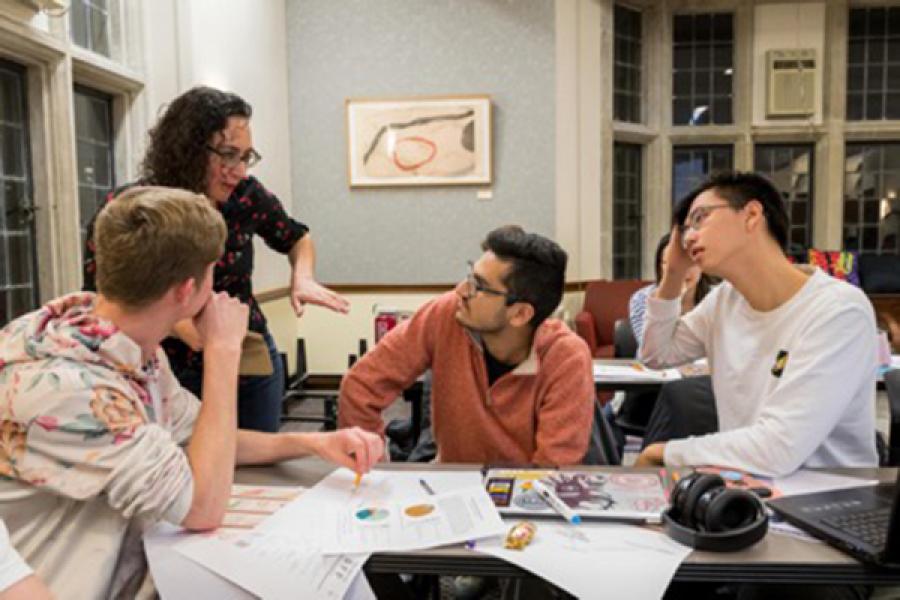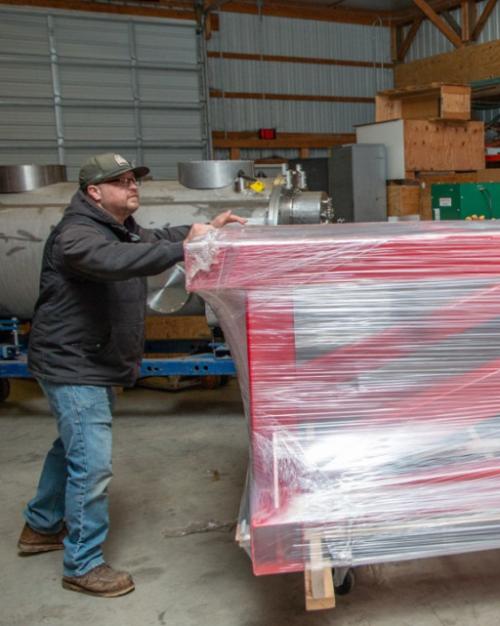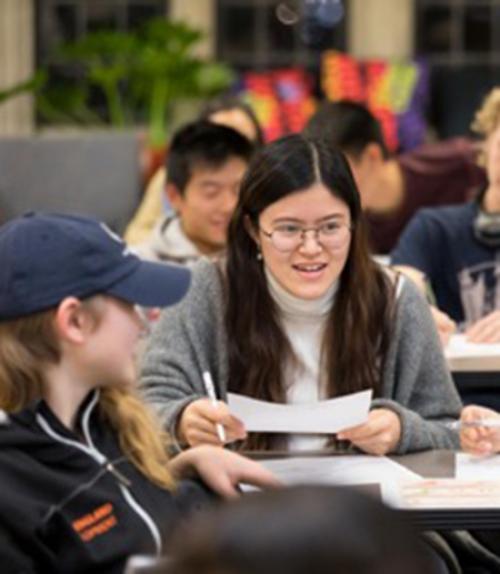By graphically representing data, information becomes more accessible to different audiences. Anna Feigenbaum, a writer, researcher and educator who focuses on creating social change through technology and communication, visited campus Nov. 18-20 for two workshops on data storytelling, sponsored by the Milstein Program in Technology and Humanity and open to all students.
The workshops helped students learn techniques for graphically displaying and interpreting data to create a narrative that can be understood by a broader audience.
Feigenbaum currently teaches multimedia journalism as a principal academic in digital storytelling at Bournemouth University in Southeast England. In 2017, she published “Tear Gas: From the Battlefields of WW1 to the Streets of Today,” which tracks the history of tear gas from its creation to its modern day role in repression and police brutality.
Feigenbaum began the workshop with an icebreaker to illustrate one of her core points — every data point isn’t just a data point; it’s a representation of something real and tangible.In the activity, everyone categorized themselves by their amounts of storytelling and data experience by standing somewhere on an imaginary coordinate plane in the room. She expressed that each data point represents a person and hoped the experience would help students have a better grasp of understanding this concept by seeing their peers dispersed throughout the room.
Feigenbaum examine several models for analyzing and displaying data, urging students to remember the following questions: What is a story? How do we give a human face to data? How do we evoke emotions? To answer these questions, she said that storytellers must understand the concepts of audience, character and narrative.
Feigenbaum led an activity in which students used storyboards to map out the flow of a data-based article and create a visual data story.
Before the next class, students were asked to find their own insights in the data set and create a narrative with them.
During the second lecture, students shared and discussed what they had been working on through a group critique, then they redesigned data visualization graphics usingscissors, glue sticks, colored pencils, markers, erasers, and pens to represent the data in a new and creative way.
“I thought that it was really interesting that there are a lot of aspects of data visualization that you don’t think about, specifically certain decisions about how you would display the data,” said Tucker Hwang, ‘22.
The Milstein students may use the data visualization skills from the workshop during their summer experiences in 2020 at Cornell Tech in New York City, where they may work with community partners to tell data-driven stories.





